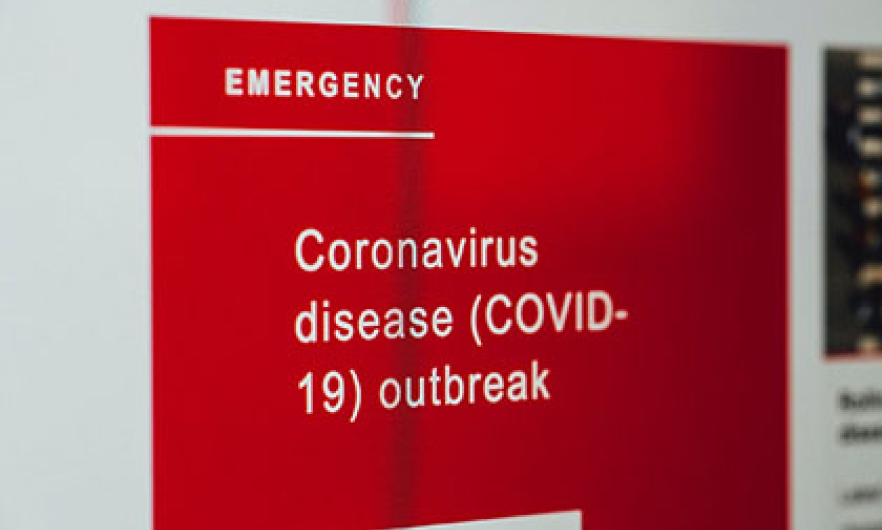New Course Highlight: Effective Risk Communication to Overcome Health Disparities During a Pandemic

HBS professor, Douglas Storey, reflects on COVID-19, health equity, and his new HBS Summer Institute course: Effective Risk Communication to Overcome Health Disparities During a Pandemic.
Course title: Effective Risk Communication to Overcome Health Disparities During a Pandemic
Course number: 410.684.11
Term: 2020 HBS Summer Institute
Location: Virtual
Dates: June 22, 2020 - June 23, 2020
Q: How long have you been working in public health and health communications? What are your research interests?
A: Professionally, I have been teaching and working in social and behavior change communication research and program evaluation for over 30 years, mostly in low- & middle-income countries.
I have worked on a wide range of health and social development issues, including family planning and reproductive health, malaria, adolescent health, child survival, gender, emergency preparedness and response, and environmental resource management. My academic training is in educational psychology, journalism, and communication research. I have been with the Johns Hopkins Center for Communication Programs (CCP) since 1993.
Q: You recently unveiled a HBS Summer Institute class called Effective Risk Communication to Overcome Health Disparities During a Pandemic. What inspired you to design the new course?
A: Dr. Rajiv Rimal, who chairs the Department of Health, Behavior & Society, originally suggested such a course based on CCP’s extensive involvement with COVID-19 communication in 24 countries around the world and in Baltimore.
A group of us in HBS and CCP (Drs. Carol Underwood and Zoé Hendrickson and I) jumped at the chance to share the science around effective communication during an outbreak. Dr. Underwood brings a sociological perspective to the study of communication and with Dr. Hendrickson has pioneered new ways of addressing structural and, particularly, gender disparities in public health. Dr. Rimal is a noted authority on risk communication and social norms.
The combination of these perspectives brings a fresh, yet comprehensive viewpoint to risk communication and disparities. The members of the instructional team for this course (Drs. Storey, Rimal, Underwood, and Hendrickson) are among the foremost global scholars and practitioners of health communication and communication theory in the world today.
Q: Effective Risk Communication emphasizes disparities facing marginalized communities. Why is integrating a health equity focus so critical to a course on communicating during a pandemic?
A: Anyone who has worked in public health knows that the impact of disease falls disproportionately more on some sub-populations than others. Structural disparities in wealth, food security, and access to health care, information, and other resources are responsible for higher vulnerability to disease among the poor, the elderly, ethnic minorities, women, migrants, and others.
Pandemics create additional strain on weak infrastructure that exacerbates underlying inequities and amplifies impact on disadvantaged groups. In the absence of effective vaccines or treatments for COVID-19, public communication is one of the few things that can help reduce the impact of the pandemic, so it is imperative that communication systems and processes address these gaps at the policy level, the community level, and among individuals.
Q: The HBS Summer Institute brings together students with a variety of professional experience in public health. What can students, whether they’re seasoned public health communicators or just starting to explore an interest in health communications, take away from the class?
A: The COVID-19 outbreak is unlike anything most of us have experienced before.
If you have worked as a health communicator on other health issues, this course will help you pause and reflect on the unique challenges this pandemic creates for public communication, such as dealing with misinformation, the tribal nature of social media use, communication under conditions of uncertainty, the decline of face-to-face communication channels, and the credibility of news sources and health services.
If you are new to the study of health communication, this course will help you develop a conceptual and practical foundation for understanding the complex role of communication in public and private life through the examination of contemporaneous examples most of us are experiencing daily.
Q: What aspect of Effective Risk Communication most excites you?
A: The opportunity to teach and learn about an issue that is unfolding around us in real-time.
More details about 2020 HBS Summer Institute registration are available here.
This interview has been edited and compressed.
